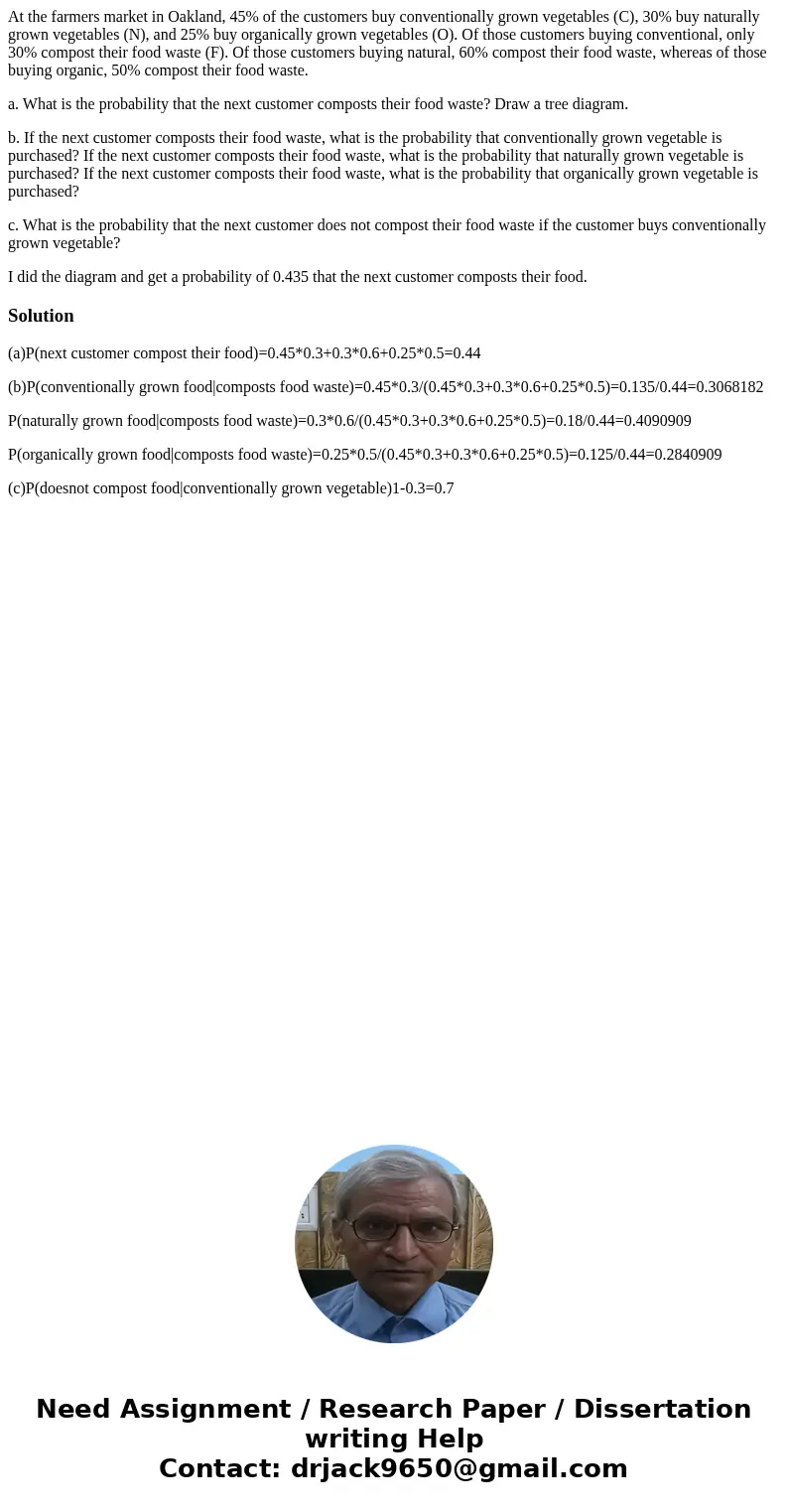At the farmers market in Oakland 45 of the customers buy con
At the farmers market in Oakland, 45% of the customers buy conventionally grown vegetables (C), 30% buy naturally grown vegetables (N), and 25% buy organically grown vegetables (O). Of those customers buying conventional, only 30% compost their food waste (F). Of those customers buying natural, 60% compost their food waste, whereas of those buying organic, 50% compost their food waste.
a. What is the probability that the next customer composts their food waste? Draw a tree diagram.
b. If the next customer composts their food waste, what is the probability that conventionally grown vegetable is purchased? If the next customer composts their food waste, what is the probability that naturally grown vegetable is purchased? If the next customer composts their food waste, what is the probability that organically grown vegetable is purchased?
c. What is the probability that the next customer does not compost their food waste if the customer buys conventionally grown vegetable?
I did the diagram and get a probability of 0.435 that the next customer composts their food.
Solution
(a)P(next customer compost their food)=0.45*0.3+0.3*0.6+0.25*0.5=0.44
(b)P(conventionally grown food|composts food waste)=0.45*0.3/(0.45*0.3+0.3*0.6+0.25*0.5)=0.135/0.44=0.3068182
P(naturally grown food|composts food waste)=0.3*0.6/(0.45*0.3+0.3*0.6+0.25*0.5)=0.18/0.44=0.4090909
P(organically grown food|composts food waste)=0.25*0.5/(0.45*0.3+0.3*0.6+0.25*0.5)=0.125/0.44=0.2840909
(c)P(doesnot compost food|conventionally grown vegetable)1-0.3=0.7

 Homework Sourse
Homework Sourse